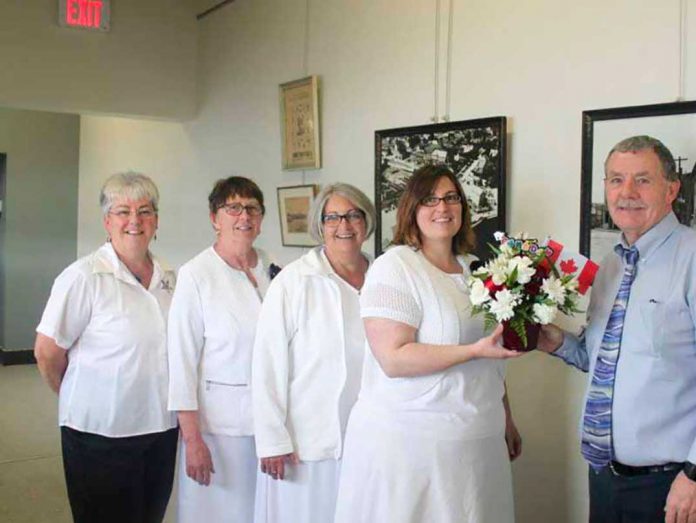with Ted Smith
Raise your hand if you already knew that 2017 was the Year of the Daffodil. Okay then, raise your hand if you just absolutely love daffodils. There, that’s better. Since daffodils are also the flower associated with spring (and official flower of March), they seem like a perfect topic for this week’s Garden Gossip. Also, everyone who has been lamenting the loss of their lovely tulips to the local deer herd will be especially happy to know that deer won’t eat daffodils. They may bite the heads off a few plants but they eventually give up and move on to something more palatable. This means there is something you can plant and actually enjoy every spring for years to come.
Originally found in the wilds of Spain and Portugal, accounts of domesticated daffodils can be found in ancient Greek and Roman texts. The Romans were so enamoured of daffodils that they ascribed many medical properties to the plant. Daffodil bulbs were carried around Europe and planted by the Roman military as they travelled. Roman doctors used daffodils to treat all sorts of medical ailments from topical afflictions to internal diseases. Since all parts of a daffodil are poisonous, this was probably not a particularly impressive component of Roman medical practice. After daffodils fell out of favour with the Romans they seemed to drop off the scene for many years. Eventually they were rediscovered by some British horticulturalists. Following a rebirth of popularity, the world famous Dutch breeders got involved and the daffodil has never looked back.
Daffodils are also well known by their botanical name Narcissus. Greek mythology tells of a young man named Narcissus who was the most incredibly handsome of men. Unfortunately, his vanity was even greater than his good looks. Narcissus went through life unable to fall in love and broke many hearts along the way. Eventually, when he finally did fall in love, it was with his own reflection in a pool of water. After pining away gazing at his perfect reflection for a long period of time, Narcissus finally faded away and was replaced by an equally beautiful yellow flower. To this day that flower bears his name. Not only does the Narcissus family contain the daffodils, it also encompasses the less flamboyant, but equally beautiful, jonquils. Where daffodils generally have large single blooms on each stalk, jonquils have clusters of much smaller flowers. Also, daffodil leaves are flattened while jonquil leaves tend to be more tubular.
Members of the Narcissus family bloom freely in our area at this time of year. They can be seen nodding their traditional butter-yellow heads in the breeze or they can be seen sporting a more updated wardrobe that includes whites, yellows, pinks, oranges, reds and greens. Many of the newer hybrids combine two or three of these colours and are virtually unrecognizable as daffodils.
In an unprecedented act of good will, Mother Nature even made daffodils incredibly easy to grow. You can literally throw some daffodil bulbs in the ditch and they will find a way to grow themselves. Of course, if you’d like to maximize their effect in your garden, there are a few simple steps to follow and you will be blessed with an ever expanding patch of spring joy for many years to come.
Daffodils grow from bulbs which should be planted in late fall after the soil has cooled considerably. Ideally, daffodil bulbs should have time to grow a healthy root system before winter sets in but they should not produce any other growth until spring. Daffodils appreciate neutral to slightly acidic soils. They should be buried from two to five times their own depth in soil. In areas of cold winters such as ours, deeper plantings have more stability. I like to plant groupings of five to seven bulbs in a large hole. Masses of daffodils are much more effective than single plants. However, if you do plant singles, they will soon divide and create their own clump anyway. Also, when creating planting holes for your bulbs, throw a handful of bonemeal in each one. Your daffodils won’t need much else to make them happy. After a few years these clumps can get a bit congested and flower quality will begin to decline. At this stage, wait until the spring bloom period has passed and then you can dig your clumps and divide them. An even better approach is to wait until fall and then dig and divide your clumps but this will require marking where they are when the foliage is visible. One of the biggest mistakes gardeners make with daffodils is to cut the foliage down after the flowers fade. The leaves must be left in place to feed the bulbs until they die down naturally. At this point you can carefully cut them off for aesthetics.
Sometimes the simplest flowers are the best. Let’s hope the rest of 2017 lives up to its official flower!




